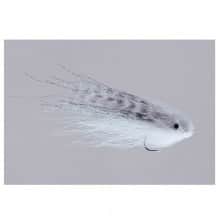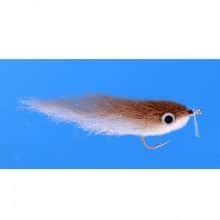The Mullet Are Here
What is the Mullet Run
The Mullet Run is an event that takes place along Florida beaches and intracoastal waterways.
A big bait migration coming from the north – traveling southbound in the months of September-November (more on times later).
Stalked by the numerous predator fish that prey on the tasty treats known as mullet, this bait migration is nothing short of a fisherman’s paradise.
When And Where
So timing the migration can be a skill of its own. The main thing that pushes the bait is the weather. From the end of August into November, bait that is off the coasts of the Carolinas and Georgia head south to Florida.
Large storms, cooler weather spikes, and winds have a huge effect on the timing of their movement. A small spike in any of the above variables can kickstart the bait movement.
West winds will lay down the seas but in return push the bait sometimes a little too far off the beach if it’s a consistent wind.
The rougher the seas the more sparse and broken up the pods will be.
Consistent light winds, slightly cooler temps, and relaxed sea states by far make for the best time to find larger pods of mullet!
The Fish You Are Going To Encounter
This is the fun part, the answer is everything. The best part of the mullet run is encountering all the different fish that follow the mullet.
To name a few fish that you might encounter:
- Blacktip Sharks
- Spinner Sharks
- Bluefish
- Jack Crevalle
- Snook
- Tarpon
- Ladyfish
- Spanish Mackerel
All of these fish target mullet in their pods and can be targeted inshore.
Some offshore species like kingfish get involved as well.
The info in the post is regarding to inshore fishing, but if you want to target the king mackerel, sailfish, and mahi-mahi, wahoo, or more – give Capt. Scott Hamilton a call and he will have your drag screaming with some pelagics in no time.

The Gear
Fly Rods
The first thing we are going to take a look at is the rod size. There are really 3 options depending on what fish you want to target. A 9, 10, or even an 11 weight are great choices.
The 9 weight for calmer days and days that you want to throw a smaller fly. Perfect for jacks, snook, ladyfish, and Spanish mackerel and to get into any action you can find with a smaller fly pattern.
The 10 weight, my bread and butter mullet run rod. Just enough backbone, if you happen to hook a good one you still might have a fighting chance. Just light enough to keep blind casting all day and not get too fatigued. The 10 also can throw a good-sized fly.
The 11 weight is for men and women specifically out for full-grown tarpon or to play with the man in the gray suit (sharks). When you need some serious backbone or want to throw a full-size hog leg mullet pattern out 80 feet you are going to want the right tool for the job. Although I wouldn’t typically carry an 11 weight only, having a 9 weight with an 11 on your back is not a bad idea..
Reels
So when it comes to mullet run reels, this is where I wouldn’t skimp. These fish pull hard and the conditions they are in are unforgiving. Between saltwater, sand, and tough fish, it can be a recipe for disaster on gear not up to it.
A few things to look for when choosing a reel is backing capacity, durability, and a good drag.
I know you are probably thinking what about sealed drags?! (totally a blog post coming for this but let’s sum it up quickly) Some of the best reels on the market (Tibor, Abel) offer reels that do not have sealed drag systems and have been used for years in the harsh salt without any hiccups. The way they work is compressing the cork (which seals the drag).
If you are going to be looking for large tarpon or shark, id highly suggests getting the best reel you can afford.
Reels like the Tibor Everglades is one of the best 9 weights. Abel makes a great SDS model if you want to go to the highest-end. The Orvis Hydros and Redington Grande are also honorable mentions that check the boxes for a more budget-friendly option.
Having a reel that has at least 180+ yards of backing is almost a necessity. If you find yourself a bit under-gunned, the best thing you can do is put pressure and let the fish run.
Lines, Leaders, And Bites
Fly Lines
A full intermediate line is going to be what you want. We use it specifically to cut through any chop on the water without slack in your connection to the fly.
The intermediate line will also get under any seaweed on the surface when stripped with the rod tip pointed down in the water. The best line currently out is the Royal Wulff Bermuda Triangle Taper
Leaders And Bite Tippet
There are a few different setups you can run depending on what you want to target and the size of your gear.
For the 9 weight. A 20lb 9-foot leader with a 30lb bite when targeting anything that wants to eat is generally a good starting point. The exception is when there is a lot of mackerel around. Then I would highly recommend the Orvis Retwistable Haywire Bite Guard in the 4″ 38lb option.
For the 10 weight. A 20Lb 9 foot leader with a 30-40lb fluorocarbon bite is going to work best when targeting the larger jacks, some 40-50lb tarpon, and big snook.
For the 11 weight. A 20lb 9 foot Leader with a 40-80lb bite section while targeting the large tarpon (drop as low as you can to get the bite). For sharks a 9ft 20lb leader with a 2-foot section of Rio Powerflex Wire Bite Tippet in 40lb.
Flies
The flies you are going to want seem like an obvious choice. Mullet patterns work extremely well.
Below are some individual flies that we highly recommend having. We have also created an assortment box that gives you a complete setup for success while fishing the whole migration. As well as mullet patterns work, sometimes having something a little different such as the Ep Mullet Bronze over white to imitate a croaker or even a darker gray pattern for the overcast days will give you a better bite ratio.
Large poppers like the Blue & White are incredibly fun patterns during the mullet run for jacks and tarpon. Early mornings when you can’t sight fish and not much is blowing up, make some noise with a popper and something will find it.
Tips And Tricks
Here are just a few tips and tricks to help you have more success and a more pleasurable experience during the mullet run.
Cast on the edges
So when the bait gets pinned and corralled, predator fish will swim along the edges of bait and take turns blowing up along the edges. Tarpon and snook will normally find the straggling bait on the outside of the corralled pod and pick them off. That’s where you should be placing your fly.
Fish low and slow
Dredging through the middle of the pod, but deeper than most of the bait is what I’m talking about. With that intermediate line, we spoke about earlier, make a cast through the pod and wait a good 10-15 seconds before stripping it back in. Slow long strips almost making your fly kick up sand on the bottom, snook go crazy for this.
Adjust for the situation
Often pods of mullet have a higher concentration of certain fish. Whether it be jacks, mackerel, or a mix of tarpon and snook. Simply adjust your gear to the fish you are seeing. Carrying two rods is not a bad idea. A 10 weight rigged for jacks and snook, and an 11 weight rigged for large tarpon or sharks depending on what mood you are in.
Birds up in the sky
This is a pretty common one and should be used in general fishing throughout the year. Always look up, finding birds up in the sky or diving down is a tell-tale sign or an easy way to locate the school you have been looking for.
Be prepared to move
If you really want to have success during the mullet run, the only way to do it is to find the big pods of mullet. Be prepared to walk far or run the boat alot. Have plenty of water available for hydration.
Sunglasses are a must
If you want to see exactly what’s going on, you need to get yourself a pair of quality polarized sunglasses. Glare is a killer when it comes to seeing in the water. This allows you to see the fish, your fly, and the bait much better. To make it an even more effective combination, throw on a black under-brim hat for more glare prevention.
Jack attack
I’m throwing this one in there just for me. I can remember over the years of fishing the mullet run, one of the most fun things to do is throwing poppers for big jacks that are smashing baits. Fish them as aggressively as possible, make as much noise as possible. You will get the most incredible eats and they pull like freight trains.
The sun helps
Finding mullet down the beach can be extremely easy sometimes. But overcast days make it tough if nothing is blowing up on the pod. The sunny, bright 12 o’clock hour makes it easier. Also, think past the time of 2-3PM – the sun will be behind you and not glaring in your face. It makes sight fishing a whole lot easier.
Other Gear To Help You Out
There is not much worse than realizing you have nothing to cut your line. Nippers are a life saver and way cheaper than a dentist visit.
Long nose pliers help a bunch when it comes to all the toothy critters you might get into. Mackerel, bluefish, jacks, and sharks will tear skin if you get too close. Please, use extra caution when dealing with mackerel and sharks – if you have to cut the fly, do it. (Pinch down your barbs, it makes things easier for everyone in involved!)
If on foot, washed up seaweed can be a pain to walk with your line stripped out. The Linekurv stripping basket has you covered on the days that are covered in seaweed. This item is not a must but on the days that there is a good amount of sargassum, you are going to be extremely glad you have it.
We’re Here To Help
Fly fishing the mullet run can be the most exciting and visual fishing of your year.
We want to make sure we have you prepared for anything you run into out there.
Give the shop a call or use the live chat feature and we will outfit you for your specific needs!

Mullet pics courtesy of Joe Uribe



























